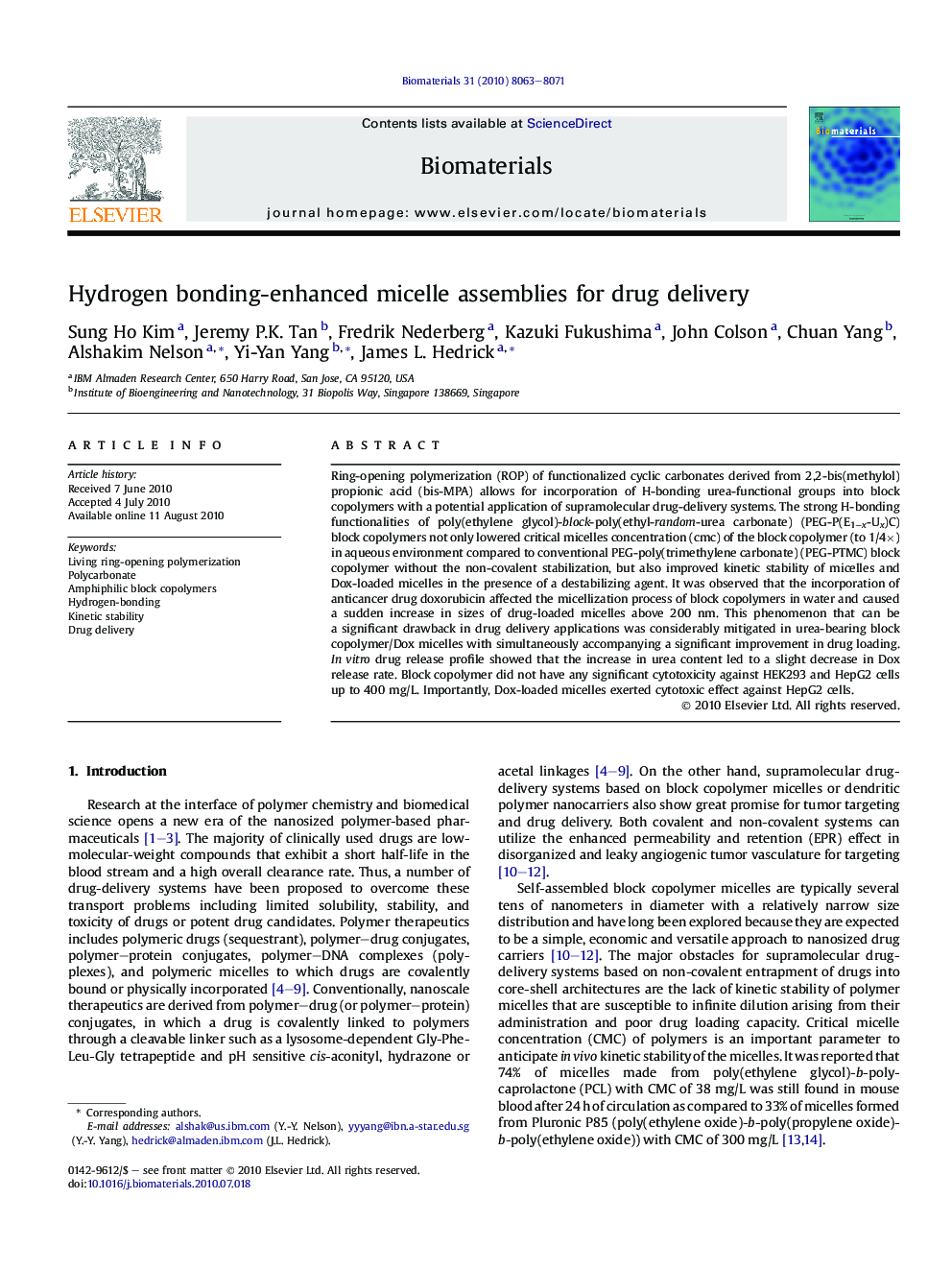| کد مقاله | کد نشریه | سال انتشار | مقاله انگلیسی | نسخه تمام متن |
|---|---|---|---|---|
| 8062 | 575 | 2010 | 9 صفحه PDF | دانلود رایگان |

Ring-opening polymerization (ROP) of functionalized cyclic carbonates derived from 2,2-bis(methylol)propionic acid (bis-MPA) allows for incorporation of H-bonding urea-functional groups into block copolymers with a potential application of supramolecular drug-delivery systems. The strong H-bonding functionalities of poly(ethylene glycol)-block-poly(ethyl-random-urea carbonate) (PEG-P(E1−x-Ux)C) block copolymers not only lowered critical micelles concentration (cmc) of the block copolymer (to 1/4×) in aqueous environment compared to conventional PEG-poly(trimethylene carbonate) (PEG-PTMC) block copolymer without the non-covalent stabilization, but also improved kinetic stability of micelles and Dox-loaded micelles in the presence of a destabilizing agent. It was observed that the incorporation of anticancer drug doxorubicin affected the micellization process of block copolymers in water and caused a sudden increase in sizes of drug-loaded micelles above 200 nm. This phenomenon that can be a significant drawback in drug delivery applications was considerably mitigated in urea-bearing block copolymer/Dox micelles with simultaneously accompanying a significant improvement in drug loading. In vitro drug release profile showed that the increase in urea content led to a slight decrease in Dox release rate. Block copolymer did not have any significant cytotoxicity against HEK293 and HepG2 cells up to 400 mg/L. Importantly, Dox-loaded micelles exerted cytotoxic effect against HepG2 cells.
Journal: Biomaterials - Volume 31, Issue 31, November 2010, Pages 8063–8071